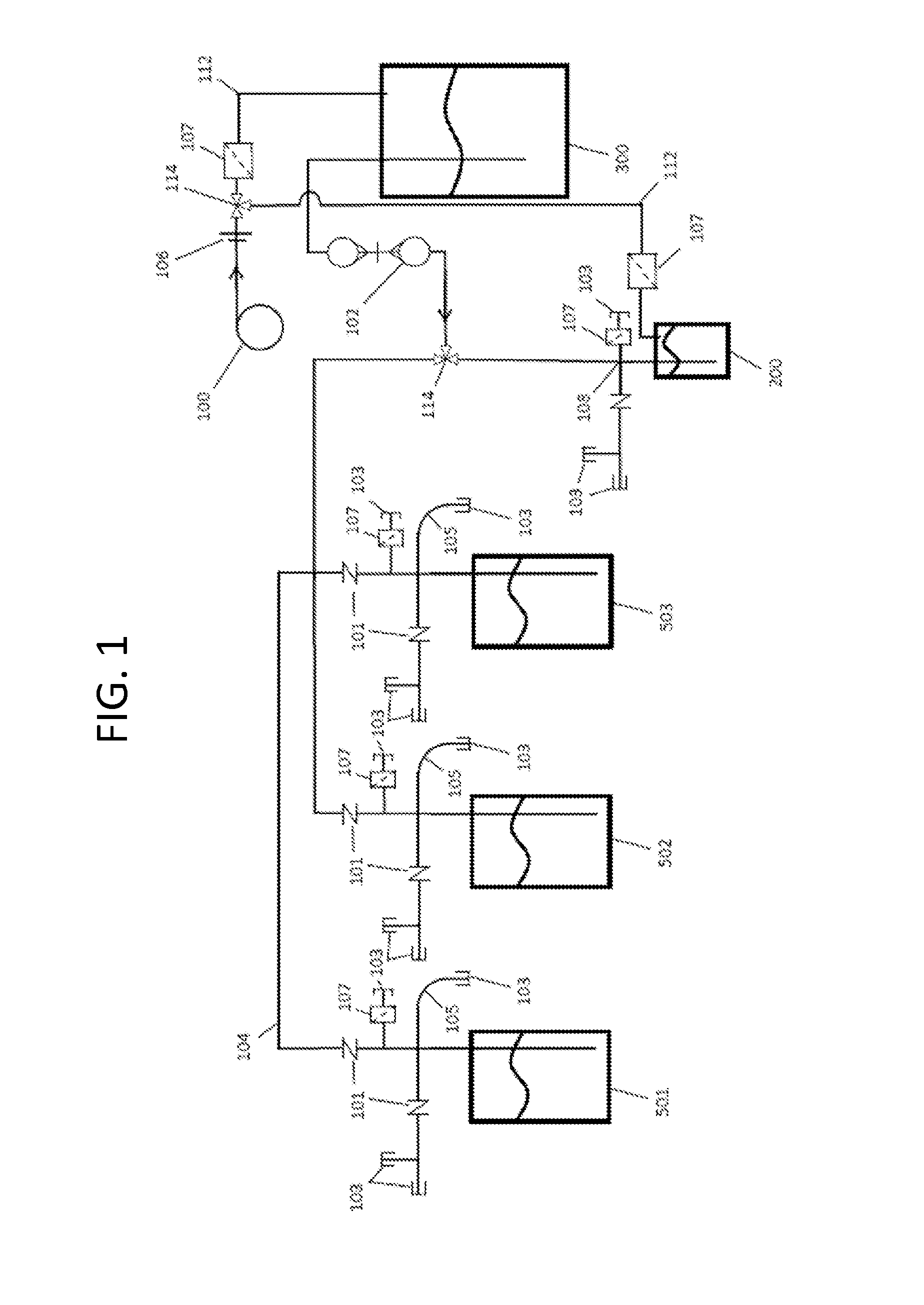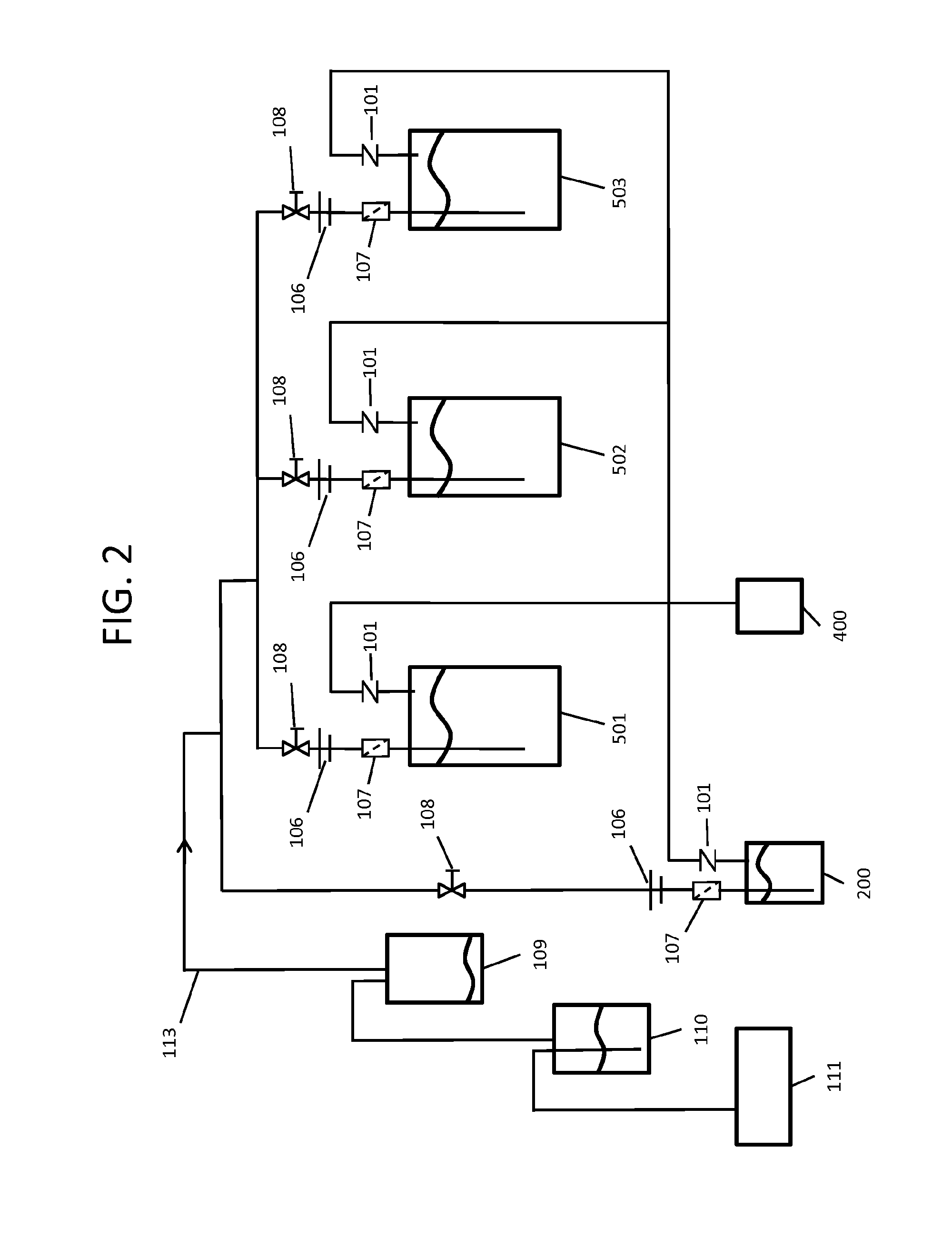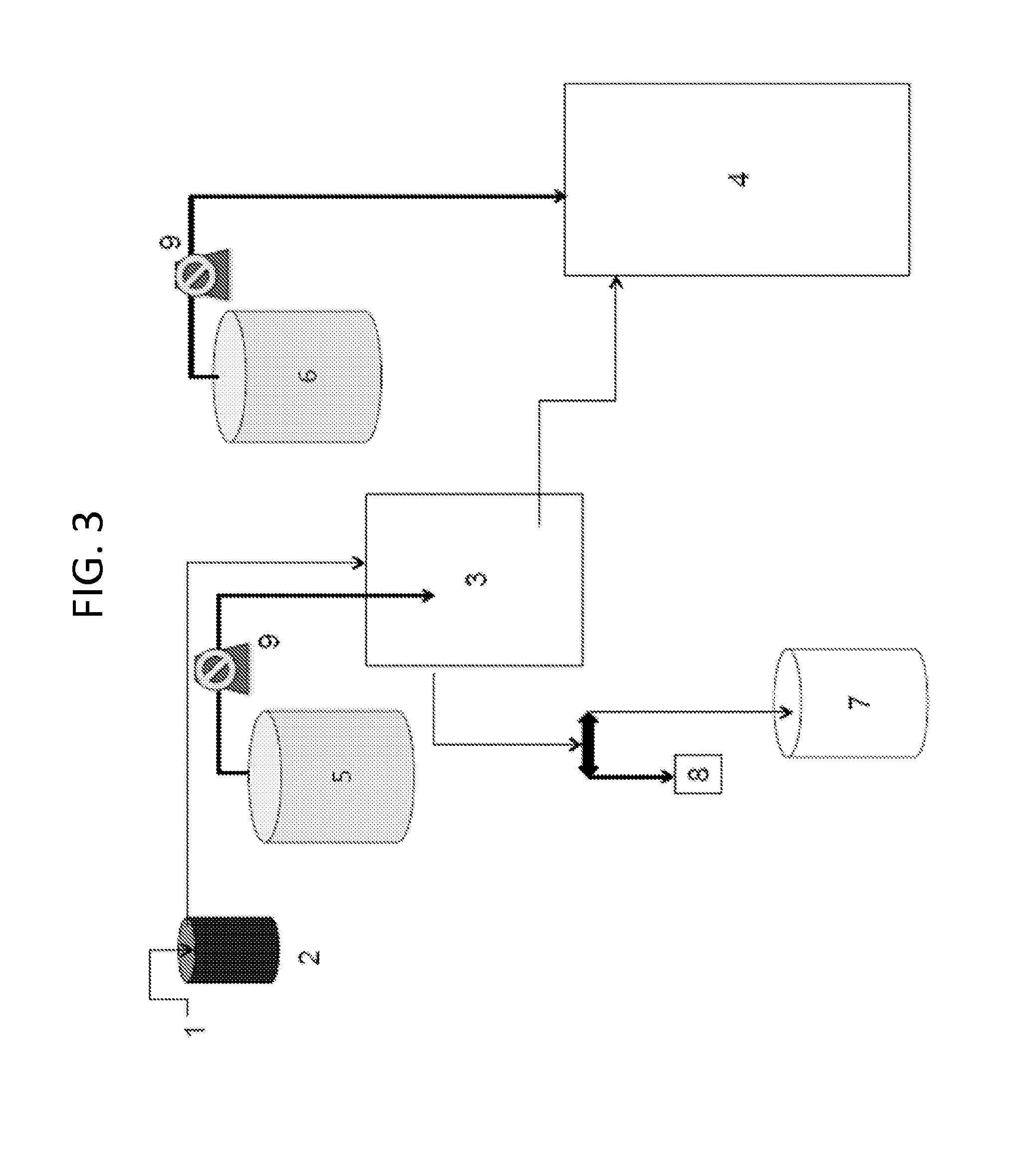Process For Inoculating Closed Photobioreactors With Cyanobacteria
- Summary
- Abstract
- Description
- Claims
- Application Information
AI Technical Summary
Benefits of technology
Problems solved by technology
Method used
Image
Examples
example 1
Preparation of Contamination Test Medium and Solid Test Plates
[0174]The contaminant test medium was prepared as follows: To 500 mL filtered seawater, the following chemicals were added: 1 g peptone, 1 g yeast extract, 1 g glucose, 1 g sucrose, and 1 g amicase. The mixture was stirred until completely dissolved, then autoclaved at 121° C. for 30 minutes. The solution was then cooled to room temperature. Then, 20 mL of sterile 50×BG-11 and sodium thiosulfate pentahydrate stocks were added to the solution using a UV laminar flow hood.
[0175]Solid plates containing the contaminant test medium were prepared as follows: In a one liter bottle with a stir bar, 10 grams of Bacto Agar were added to 500 mL of RO water, and autoclaved at 121° C. for 30 minutes, then cooled slightly. The sterilized contaminant test medium liquid broth (above) was mixed in under sterile conditions inside a laminar flow hood, and plates were poured in a UV laminar flow hood. Plates were cooled and stored at 4° C. u...
example 2
Quality Control of Contamination Test Medium Plates
[0176]For a positive control of contaminated test plates, an agar plate made from the contaminant test medium in the above example was placed on the laboratory bench top with the lid off for 10 minutes at room temperature. The lid was then placed back on the plate, the plate was wrapped with 3M micropore tape, and the plate was incubated at 30° C. for one week. In a typical test run, contaminant growth (presence of colonies) on this positive plate was observed within 2-3 days. In situations where no contaminants were observed with this positive control, the positive control failed, the plates were discarded, new plates were prepared, and the method was performed again until positive colonies were observable.
example 3
Validation of Sterility Measures of Containers, Pumps, Tubing, Etc. Prior to Contact with the Cyanobacterial Cultures
[0177]Each step and component in the scale-up system was sterilized by some means. Smaller volumes of liquid and smaller sizes of tubing, connectors, and containers, were sterilized using an autoclave. When larger amounts of culture medium were used, the master nutrient mix was sterilized using an autoclave and added to well water that had been previously sterilized by other means (such as ozonation). The tubing, pumps, emitters, and connections were sterilized by either autoclave, ozonation, steeping in a sterilant, or by other suitable means. Each of these steps was initially validated to confirm that the method resulted in contaminant-free components. The steps were also checked intermittently throughout scale-up to confirm the lack of contaminants.
[0178]In order to validate the sterility of the various methods, a sample sterilized component was contacted with cont...
PUM
 Login to View More
Login to View More Abstract
Description
Claims
Application Information
 Login to View More
Login to View More - R&D
- Intellectual Property
- Life Sciences
- Materials
- Tech Scout
- Unparalleled Data Quality
- Higher Quality Content
- 60% Fewer Hallucinations
Browse by: Latest US Patents, China's latest patents, Technical Efficacy Thesaurus, Application Domain, Technology Topic, Popular Technical Reports.
© 2025 PatSnap. All rights reserved.Legal|Privacy policy|Modern Slavery Act Transparency Statement|Sitemap|About US| Contact US: help@patsnap.com



